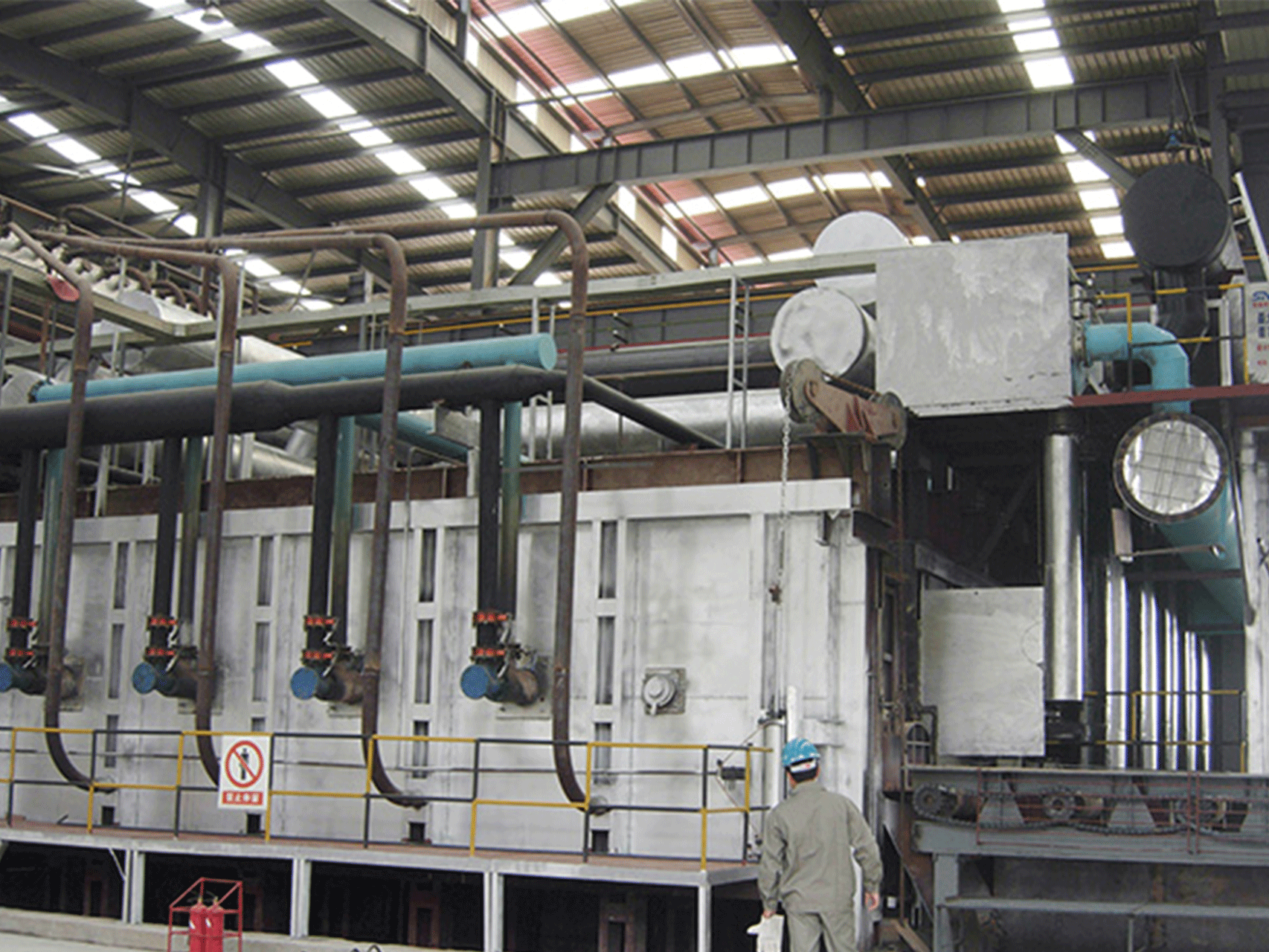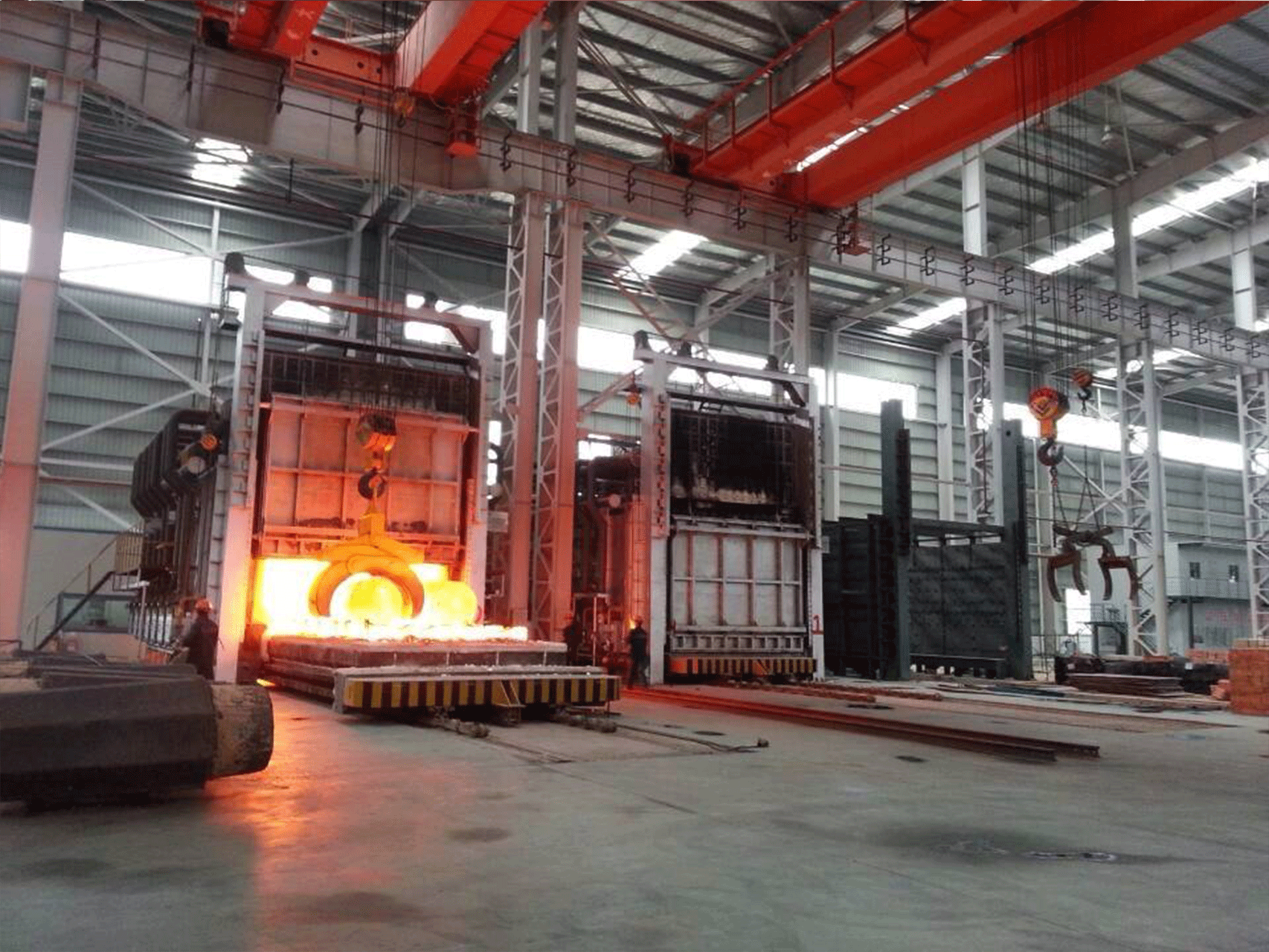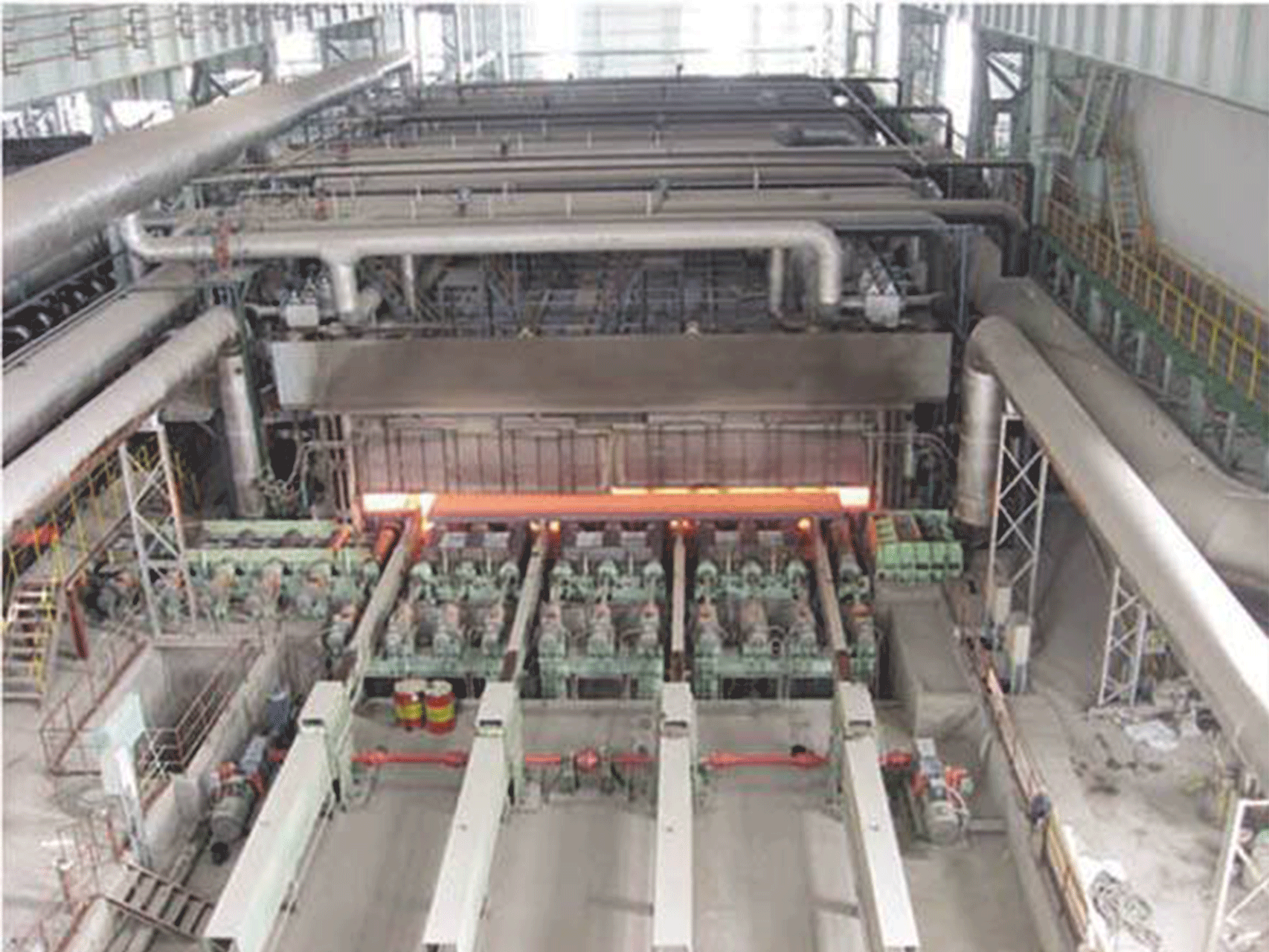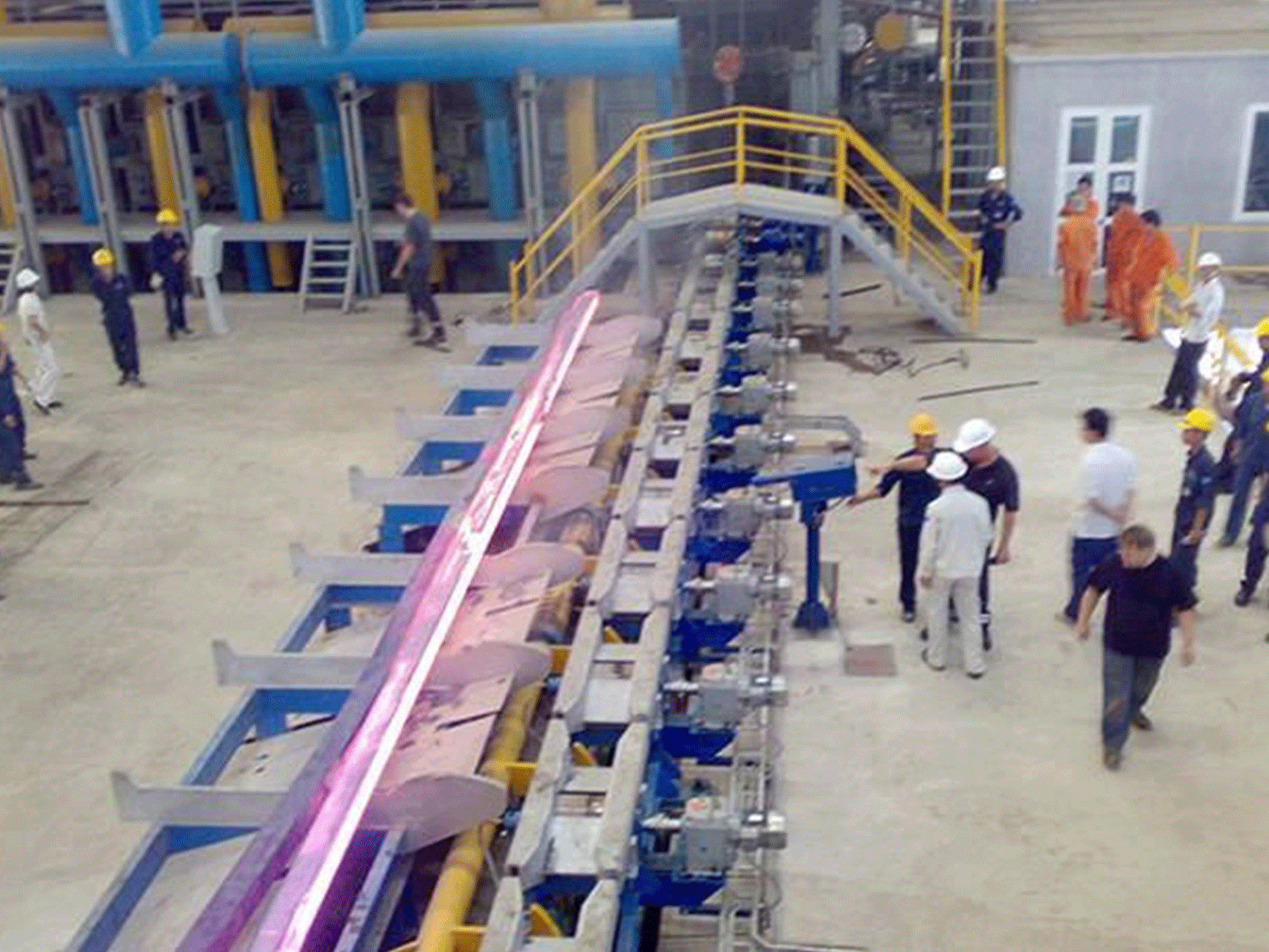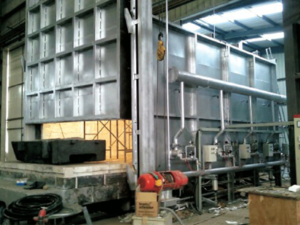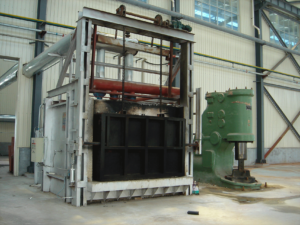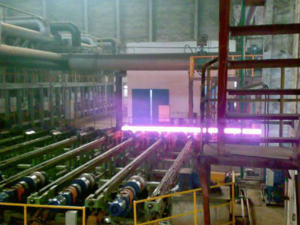Inquiry
Gas Fired Forging Furnace
A gas-fired forging furnace is a type of furnace that uses natural gas or propane as a fuel source to generate high temperatures for forging and other metalworking processes.
In a gas-fired forging furnace, a burner unit is used to heat the interior of the furnace to the desired temperature range for the forging process. The burner unit typically consists of a combustion chamber, a fuel supply system, and an ignition system. The fuel supply system delivers a controlled flow of natural gas or propane to the combustion chamber, where it is ignited by the ignition system to generate a flame. The flame heats the refractory lining of the furnace, which in turn heats the metal being forged.
Advantages of Gas-Fired Forging Furnace
Gas-fired furnaces offer several advantages over other types of furnaces for forging and other metalworking applications. Here are some of the advantages of using a gas-fired forging furnace:
- High Efficiency: They are known for their high energy efficiency, which can help to reduce fuel costs and lower overall operating expenses.
- Precise Temperature Control: It offers precise temperature control, which is essential for many forging and metalworking applications. They can quickly and accurately heat materials to the desired temperature range and can maintain that temperature with a high degree of accuracy.
- Low Emissions: It produces fewer emissions than other types of furnaces, which can help to reduce environmental impact and comply with regulatory requirements.
- Easy to Operate: They are relatively easy to operate, and require minimal training and experience to use effectively.
- Versatile: It can be used for a wide range of forging and metalworking applications, and can be designed to accommodate different sizes and shapes of materials.
Gas Fired Forging Furnace FQA
Q: What is a gas-fired forging furnace?
A: It is a type of furnace used for heating metals to high temperatures for forging and other metalworking processes. It uses natural gas or propane as a fuel source to generate heat, which is directed into the furnace to heat the metal being forged.
Q: What are the benefits of using a gas-fired furnace?
A: There are several benefits of using a gas-fired furnace for metalworking applications, including:
- High Efficiency: They are highly efficient, providing fast and precise heating that can reduce overall production time and energy costs.
- Precise Temperature Control: They allow for precise temperature control, which is essential for many metalworking processes, including forging, casting, and heat treating.
- Low Emissions: They produce fewer emissions than other types of furnaces, making them a more environmentally friendly option.
Q: What types of materials can be heated in a gas-fired forging furnace?
A: As for the types of materials that can be heated in a gas-fired furnace, most metals can be heated, including steel, aluminum, copper, brass, and titanium. The exact temperature range and heating time will depend on the specific material being heated and the desired outcome of the metalworking process. The precise temperature control provided by gas-fired furnaces allows for precise heat treatment, which can improve the strength, durability, and overall quality of the finished product.
Q: How does a gas-fired forging furnace work?
A: Here's how it works:
- Fuel Supply System: The furnace is connected to a natural gas or propane supply that provides the fuel needed for heating.
- Combustion Chamber: The fuel is ignited in the combustion chamber to create a flame that generates heat.
- Heat Exchange: The heat generated by the flame is transferred to a heat exchanger or refractory lining, which absorbs the heat and radiates it throughout the furnace.
- Temperature Control: The temperature inside the furnace is controlled using a thermostat or other temperature control system, which adjusts the flow of fuel to maintain the desired temperature range.
- Loading and Unloading: Once the furnace has reached the desired temperature, the metal to be forged is loaded into the furnace using tongs or other tools. Once the forging process is complete, the metal is removed from the furnace using the same tools.
Q: What are some safety considerations when using a gas-fired forging furnace?
A: Here are some safety considerations to keep in mind when using a gas-fired forging furnace:
- Ventilation: It produces combustion byproducts, such as carbon monoxide and nitrogen oxides, that must be vented safely to avoid the dangerous buildup of these gases in the workspace.
- Fuel Storage: The gas supply tanks should be stored in a well-ventilated area, away from ignition sources, and should be inspected regularly for leaks or other potential hazards.
- Fire Safety: It can pose a fire hazard if not used and maintained properly. It is important to keep flammable materials away from the furnace and to have a fire extinguisher nearby in case of an emergency.
- Protective Gear: When operating a gas-fired furnace, it is important to wear appropriate protective gear, such as heat-resistant gloves and eye protection.
Q: Can a gas-fired furnace be used for small-scale forging operations?
A: As for small-scale forging operations, gas-fired furnaces can be used in these applications, but it is important to choose the right size furnace for the job. Smaller furnaces are available that are designed for smaller-scale operations and are more appropriate for home or hobbyist use. It is still important to take all necessary safety precautions, even when using a smaller gas-fired forging furnace.







